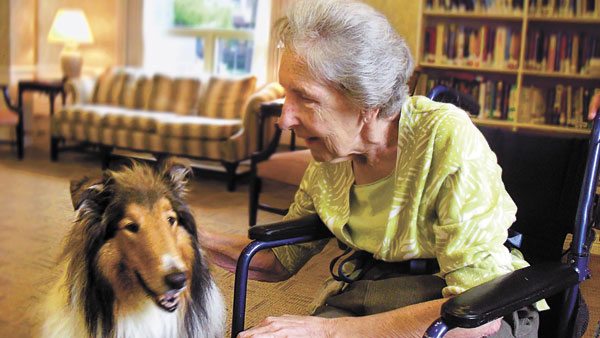A series identifying technology disruption in the ageless living space.
Do women live on average 7-8 years longer than men because they focus more on relationships? Research shows lower rates of dementia in socially active people. The Global Blue Zones show a consistency of higher social engagement where centenarians cluster. Yet, one quarter of our population has no one to talk too. Brain scans show areas of the brain light up when we have face to face contact coupled with an increased release of “feel good” hormones oxytocin and dopamine. In contrast, lack of engagement weakens the immune system and produces higher levels of the stress hormone, cortisol. Psychologist, Susan Pinker, says “building your village is a matter of life or death”. (1)
Disruptors: Virtual Reality (VR) and Augmented Reality (AR) Platforms
The therapeutic effects of virtual reality are an evolving science. Experiences are designed to combat the negative effects of limited mobility and isolation. Augmented Reality has the potential to resolve some issues of engagement by creating a real-world environment in which the user interfaces with multiple sensory modalities (visual, auditory, tactile and olfactory) stimulating the nervous and endocrine systems. Examples of disrupters reaching a tipping point in the VR / AR space:
- MyndVR is a start-up, licensing existing virtual reality content to enable those with reduced mobility to experience other worlds and revisit familiar locales from their past travels. Viewed through a Samsung Oculus VR headset these 5 to 10 minute videos can start the day with a nature walk and culminate with front row symphony seats in the evening. Imagine the possibilities.
- Robo companion pets are increasingly being used to reduce agitation in those suffering from mid-stage dementia. Therapy animals are a solution also, as evidenced by Ohio-based 4 Paws for Ability, Offering dementia therapy dogs for $17,000 purportedly below their actual cost, 4 Paws is sold out with a waitlist. (2) Intended for a broader market, development of robo-kitty by Hasbro and Brown University also target individuals living independently, but unable to meet the physical demands of maintaining a pet. Working with a $1M grant from NSF, a scientist at Brown are developing additional AI for these robo-pets. Future pets will function like a virtual assistant, offering solutions to finding lost objects, reminders to take meds or go to a Dr’s appointment. If you want to stick to the robo-kitty that just purrs, you can find them on Amazon for around $100. If the maintenance of fur for your loved one is a turn-off, there are some robo reptiles on the market – they just don’t seem as cuddlable!
- Pinker, Susan (2017) Ted Talks. https://www.ted.com/speakers/susan_pinker, The secret to living longer maybe your social life.
- Powell, Tia. (2019) Wall Street Journal. New hopes for dementia care. April 13,14.p.c-18.





